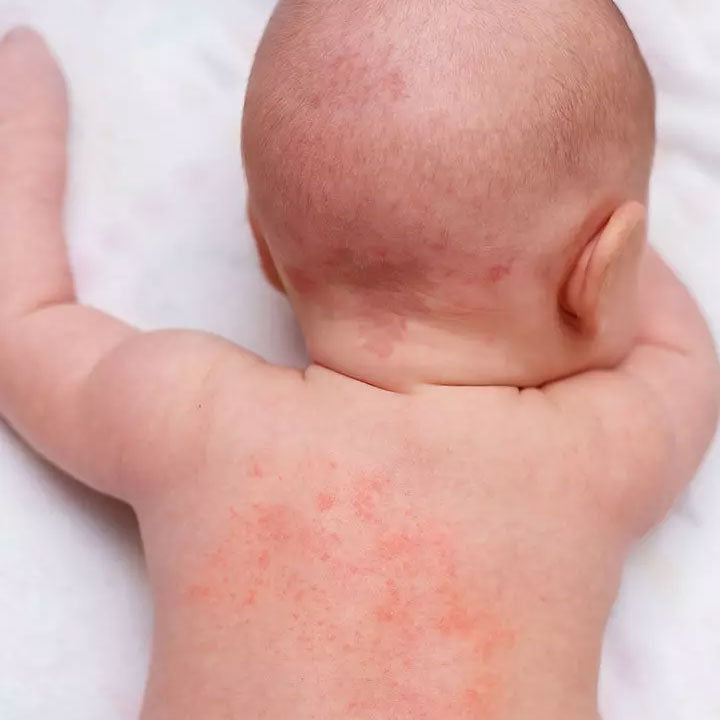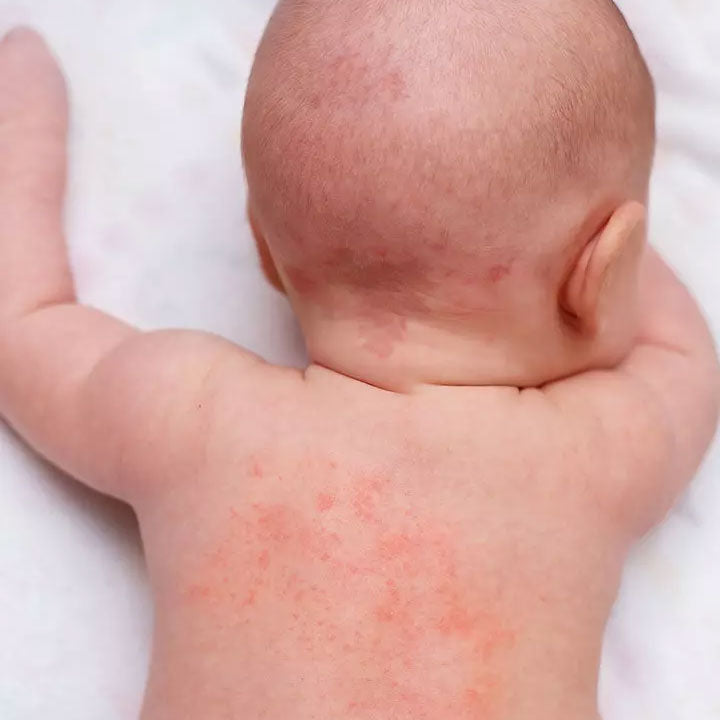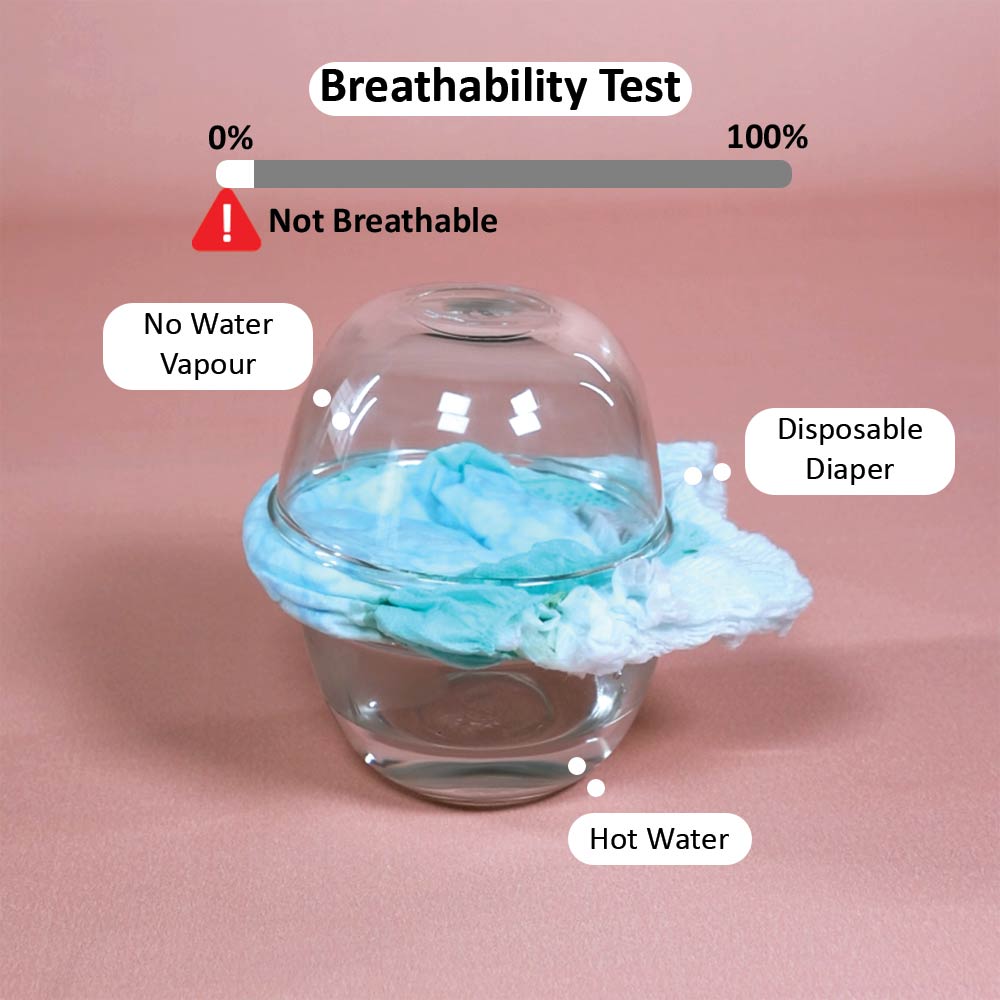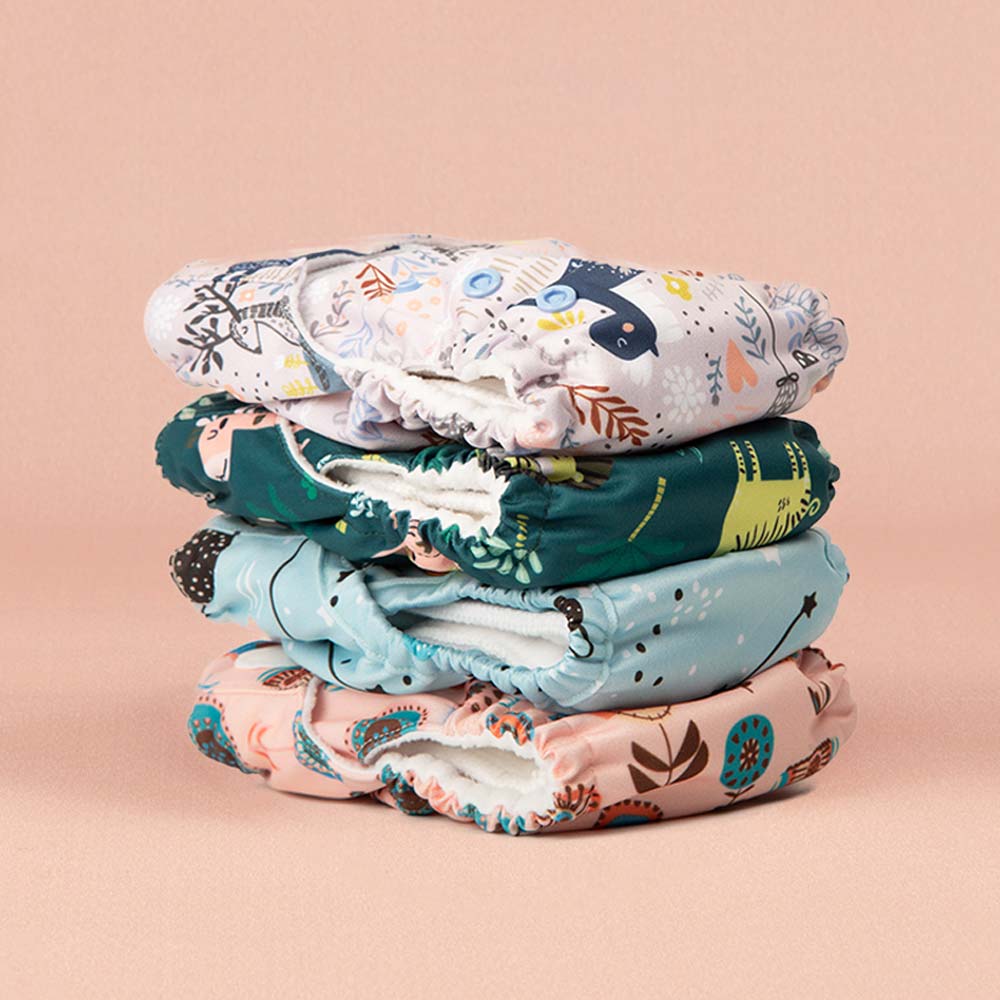
The scorching Indian summer can be brutal, especially for our little ones. Prickly heat rash, caused by blocked sweat glands, is a common concern for parents. Add to that the discomfort of diapers in hot weather, and you've got a recipe for crankiness.
Cloth diapers, especially those made of synthetic fibers are not an exception. But fear not! Here's a guide to navigating the summer with a happy, rash-free baby.
Understanding Heat Rash:
Heat rash appears as tiny red bumps, often on the baby's neck, chest, and inner thighs. It's more common in newborns and babies with sensitive skin. Here are some tips to prevent and soothe heat rash:
- Dress them cool: Opt for loose, breathable clothes made from natural fibers like organic cotton. Muslin or linen. Avoid synthetic fabrics that trap heat. Fleece suits are a no-no in Summer!
- Beat the heat: Keep your baby cool in an air-conditioned room or a well-ventilated space. Take them outdoors during cooler hours (early mornings or evenings). Ventilation and Fresh Air is key!
- Tepid baths: Give your baby frequent lukewarm baths to remove sweat and dirt. Pat them dry instead of rubbing them.
- Diaper-free time: Whenever possible, allow your baby diaper-free time. This exposes their skin to air, allowing sweat to evaporate and preventing irritation.
- Diet: For breastfed babies, moms can increase their own fluid intake to ensure proper hydration for the baby. There's no need to introduce additional fluids unless advised by a paediatrician. For formula-fed babies, follow the recommended water-to-formula ratio and ensure proper mixing.
- Toddlers can be offered cool, filtered, or boiled water throughout the day, especially during playtime or hot weather. Avoid sugary drinks or juices, as they can dehydrate your child.
Diapering in the Indian Summer:
Diapers are a necessity, but the wrong diapers or some cloth diapers can trap heat and moisture, worsening heat rash. Here are some summer diapering hacks:
- Choose wisely: Opt for breathable diapers designed for hot weather. Look for cloth diapers with organic cotton or cotton variants like Muslin core as they allow better airflow. Ditch the disposable ones. Do not ever choose Cloth Diapers that are made of Charcoal Bamboo, Bamboo Cotton, or Microfiber. All these are synthetic fabrics that work well for athletic wear. Bamboo is not organic and should always be labeled as “Viscose or Rayon”.
- Frequent changes: Change diapers more often than usual, especially after feedings or bowel movements. Don't let them sit in a wet or soiled diaper. Aim for changing diapers or cloth diapers every 2-3 hours or more frequently as needed.
- Diaper rash cream: You may apply a zinc oxide-based diaper rash cream as a barrier to protect your baby's skin. Always consult your baby’s doctor before using prescribed medicines. All rashes may not be diaper rash or heat rashes.
The Kewt Langot Advantage:
Traditionally, Indian parents have used langots (cloth diapers of old times) for centuries. In the summer heat, Kewt Langots & Fluffie made from organic cotton are a perfect option:
- Breathable Comfort: Organic cotton is naturally breathable, allowing for better airflow and preventing heat build-up. You can keep newborn babies in Kewt Langots and toddlers in Fluffie during the daytime. This also prevents mess and promotes hygiene rather than keeping babies in the open.
- Soft on Skin: The organic cotton is gentle on your baby's delicate skin, reducing the risk of irritation.
- Diaper-free Alternative: Kewt Langots & Fluffie can be used for diaper-free time, giving your baby's skin some much-needed exposure to air. Aim for more frequent diaper-free time during Summer. You can wear Just Bumm Cloth Diapers for traveling and nap times.
Fleece vs. Organic Cotton:
While fleece langots are popular, they are not ideal for summer. Fleece traps heat and moisture, making the heat rash worse. Organic cotton, on the other hand, is breathable and absorbs sweat, keeping your baby cooler and comfortable.
Remember:
- Heat rash usually clears up on its own within a few days. If the rash worsens or doesn't improve, consult your paediatrician.
- Let your baby's skin breathe whenever possible. Fresh air is a natural coolant!



Leave a comment
All comments are moderated before being published.
This site is protected by hCaptcha and the hCaptcha Privacy Policy and Terms of Service apply.